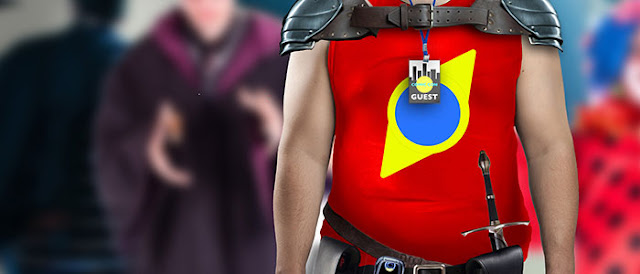“When you see someone in pain, constant pain, you can’t help it: if you’re human, you feel a little pain too.” It’s a good working definition of compassion, offered by Gina, the central character of Julia Cho’s new play, Office Hour.
“One of the particular challenges of writing plays is that as time goes by and life gets more complicated, it’s harder for me to find the kind of solitude and quiet that allows me to sink into my subconscious. That’s the place plays truly come from, not from external things I read or see, but from some deep current within me. I can’t force myself to write a play out of an idea. I have to be still and quiet and let the play come out of its own accord.”
But there isn’t much compassion on display in the play’s first scene, when Gina meets with two fellow adjunct creative writing teachers to discuss a student who has set off alarm bells with his hostile classroom demeanor and the violence and perversity in his writing. Gina, who has just begun a new class with this student, is uncertain about how seriously to take his strange behavior. But David and Genevieve have come to a stark conclusion: “the kid” is Trouble, and they’re afraid if someone doesn’t do something soon, he could go off like a time bomb. (They won’t even say his name, perhaps not wanting to humanize the threat they have discovered in their midst.) And from the way they describe him, their fears seem justified.
– Julia Cho
Then the other shoe drops. Having no apparent way to deal with the potential problem through official channels because of various bureaucratic roadblocks, David and Genevieve have concluded that Gina is the only one who might be able to get through to the troubled student and thereby defuse the time bomb. Genevieve reasons that because Gina shares the student’s cultural background, “you guys must have stuff in common.”
However presumptuous Genevieve’s assessment might be, Gina does have to find a way to deal with the problem that has been dumped in her lap. Although she never set out to be a teacher—it became necessary when success as a writer proved elusive—she still takes her teaching seriously and she believes she has an ability to connect with her students. And then there’s that feeling of compassion she can’t seem to shake. So she reluctantly summons the troubled student to a meeting.
The rest of the play covers what happens when he shows up for Gina’s office hour, and nothing can prepare Gina for what she learns about her student—or about herself—as she begins to crack through his shell of hostility.
Although its mode is realistic, the structure of Office Hour is not entirely conventional. Rather than following a linear progression from the beginning of Gina’s meeting with her student to the end, the play fractures at key moments in a way that can’t be explained without giving too much away. But the fracturing becomes key to the experience of the play and, more importantly, it allows the play to honor the complexity of its subject matter.
Office Hour deals with the potential for sudden, shocking violence in a society where too many people—particularly a certain breed of young men—feel alienated, powerless, persecuted and misunderstood, and respond by lashing out. It’s a perplexing, almost unexplainable phenomenon, and the societal fissures it causes seem to spread uncontrollably, like cracks in a thin sheet of ice, one crack leading to another and then another. That’s why Cho has chosen as much as possible to let the story control its own telling.
The result is a suspenseful, thought-provoking drama, whose outcome remains in doubt even as Gina’s final words reverberate in our minds: “Figure it out.”
 |
| Tony Amendola, Laura Heisler, Leo Marks, Linda Gehringer and Betsy Brandt in the 2010 world premiere of The Language Archive by Julia Cho. |
Office Hour had a reading in SCR’s NewSCRipts series in 2015 directed by Neel Keller, who returns to stage the full production. An associate artistic director at L.A.’s Center Theatre Group, Keller has made a career of directing new plays at theatres across the country, including the provocative, formally inventive work of such playwrights as Sheila Callaghan, Kimber Lee, Jennifer Haley and Dael Orlandersmith.
Making her SCR debut in the role of Gina is Sandra Oh. Although she may be best known for starring as Cristina Yang in the long-running TV series, “Grey’s Anatomy,” Oh has made frequent stage appearances throughout her career, both locally (Mark Taper Forum, La Jolla Playhouse) and nationally (The Public Theater in New York and Victory Gardens in Chicago). She also appeared in the films Sideways and Under the Tuscan Sun.
Gina’s troubled student will be played by Raymond Lee, last seen here earlier this season in the very different role of a rap-singing, love-making, motorcycle-riding refugee in the world premiere of Qui Nguyen’s Vietgone. Lee has also appeared at SCR in the Theatre for Young Audiences production of Robin Hood and the Studio SCR presentation of Four Clowns.
Rounding out the cast of Office Hour, as Gina’s colleagues, David and Genevieve, are Corey Brill and Sola Bamis. Brill has played a diverse series of roles at SCR, including Mr. Darcy in Pride and Prejudice and the philosophizing fetus in Noah Haidle’s Smokefall. Bamis is making her SCR debut after appearances at such leading theatres as the Oregon Shakespeare Festival and the Guthrie Theatre in Minneapolis.
Learn more and buy tickets.






































